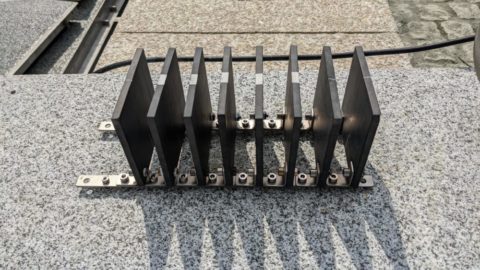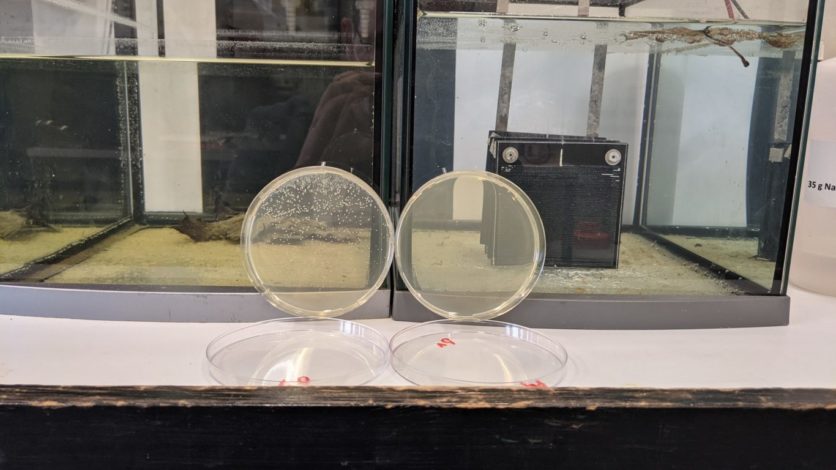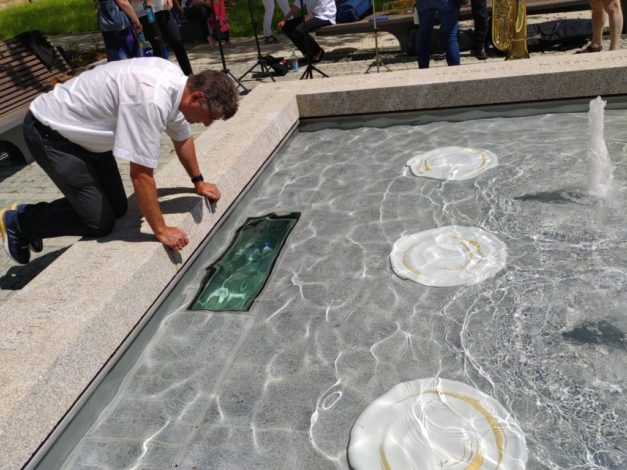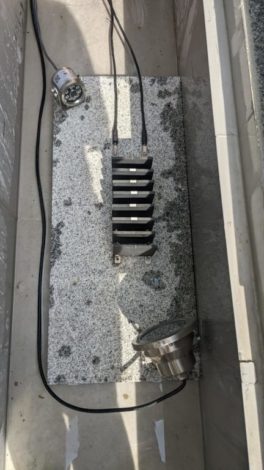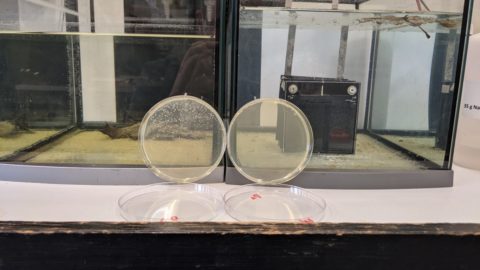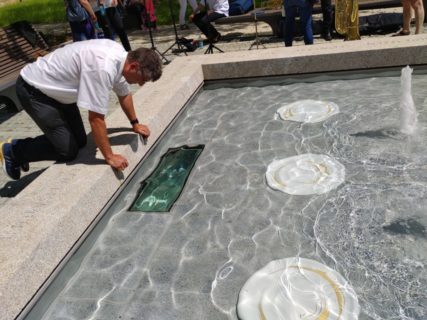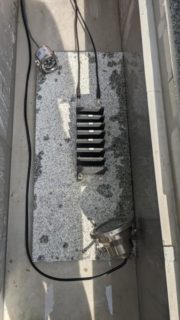Clean Water without Chemicals?
First cleaning prototype for electrochemical water purification in use in the Upper Palatinate region of Germany
Clean water through electricity instead of chlorine: In the future, water systems such as wells and cisterns, but also sewage treatment plants, could be cleaned without the addition of chemical substances. As part of the Bavarian research project DiaKerWa, a research team from FAU is currently testing a purification method that uses only diamond electrodes and electricity.
World premiere in Tirschenreuth
It is the first installation of its kind in the world: In the Upper Palatinate town of Tirschenreuth, diamond ceramic electrodes are currently freeing the new fountain in front of the district administration office from micro-pollutants. The integrated double diamond electrodes (iDDE) need only a little current to cause oxidation in carbon-based contaminants such as germs from bird droppings or algae. That is, the contaminant is burned “cold” in the water as it oxidizes at temperatures low enough that no flame is visible. Specifically, at the positive pole, the electrodes generate OH radicals, molecules each consisting of one hydrogen and one oxygen atom, which convert carbon compounds into water and a small amount of carbon dioxide. At the negative pole, hydrogen is generated at the same time, which can be used energetically if required.
Franconian material replaces metals from abroad
The system, which can be remotely controlled from Erlangen, was developed by the Institute of Materials Science and Engineering for Metals and FAU’s Mechanics and Electronics Workshop. The novel diamond electrodes, which have already been patented, emerged from the university’s collaboration with the Upper Franconian ceramic artist Barbara Flügel.
Nowhere else in the world are the iDDEs made with porcelain from Selb in Franconia. The material replaces rare and expensive metals from more distant parts of the world, such as niobium from Brazil.
The goal: electrochemical water purification for wastewater treatment plants
With the help of remote monitoring, the university now wants to observe how strongly and how long the iDEE reliably clean. If the project is successful, the iDDEs could be used in more than just wells. “We hope that in the not too distant future, the purification will also be used in rainwater harvesting or wastewater treatment plants. With the iDDE, the fourth purification stage for sewage treatment plants currently under discussion in Bavaria can be realized and, at the same time, part of the energy used can be recovered via hydrogen production. This could go a long way towards protecting our waters and also the consumer’s wallet,” explains Prof. Stefan Rosiwal, deputy head of the department.
But at present, water purification with iDDE still lacks European approval, which is why it is not allowed to be used either for wastewater from sewage treatment plants or for drinking water. Closed-loop systems, such as those used in fountains, are less critical and a good basis for testing, says Rosiwal. In addition, he said, there are also initial applications for industrial wastewater that use electrical oxidation for detoxification.
The DiaKerWa project, funded by the Bavarian Research Foundation, will run for three years.
Further information
Prof. Stefan M. Rosiwal
Institute of Materials Science and Engineering for Metals
Tel.: 09131/85-27517
stefan.rosiwal@fau.de
